5 Questions to Ask When Buying a New Furnace
“Honey! Come look at these ratings on this Carrier furnace!”
While that’s not a phrase you ever expected to say, being a homeowner definitely comes with its own vocabulary.
Shopping for a new furnace isn’t exactly the most thrilling part of homeownership, but you will be glad you did your research when winter’s chill creeps in.
Whether your old furnace has thrown in the towel or you want to upgrade to something more energy efficient, picking the perfect unit can feel like solving a mystery.
With so many models, features, and price points, how do you know which Carrier furnace is best for your home?
Before you get overwhelmed, Carrier Cooling Center is here to help with the top five questions you should ask when buying a new furnace.
Our network of Carrier authorized dealers expands across Arizona, Texas, New Mexico, Nevada, Idaho, and California, so we have extensive knowledge of how to best shop for Carrier furnaces.
Questions to Ask When Buying a New Furnace
Furnaces are long-term investments, so you want to be certain that the one you choose will efficiently heat your home for many winters to come. Carrier Cooling Center offers a range of high-quality Carrier furnaces that can meet your heating needs, but selecting the right model for your home requires thoughtful consideration.
Here are five essential questions to ask when purchasing a new furnace:
1. What Type of Furnace Is Best for My Home?
Several types of furnaces are available, and understanding which one is right for your home is the first step in your decision-making process. The most common furnace types are:
- Gas Furnaces: These furnaces are powered by natural gas and are one of the most common heating options in the U.S. They tend to be highly efficient, especially with modern advancements, and are a cost-effective option in areas where natural gas is readily available.
- Electric Furnaces: These use electricity to heat your home and are generally less expensive to install. However, operating an electric furnace can be higher in areas with expensive electricity rates.
- Oil Furnaces: Oil furnaces are less common today but still a good option for areas where natural gas isn’t available. They tend to require more maintenance than gas furnaces.
- Propane Furnaces: Similar to natural gas furnaces, propane furnaces are often used in rural areas where access to natural gas lines is limited.
A Factory Authorized Carrier dealer can help assess your home’s energy infrastructure, regional climate, and other factors to guide you toward the right type of furnace. For example, in Idaho’s colder climate, gas furnaces tend to perform better due to their efficiency at low temperatures.
2. What Size Furnace Do I Need?
Furnace capacity is crucial to your home’s comfort and energy efficiency. A furnace that’s too small will struggle to keep your home warm, leading to high energy bills and wear and tear on the system as it constantly runs to meet the demand.
On the other hand, an oversized furnace will cycle on and off too frequently, reducing efficiency and potentially shortening the furnace’s lifespan.
Furnace size is typically measured in BTUs (British Thermal Units), and a home’s required BTU output depends on several factors, such as:
- Square Footage: Larger homes need more heating power.
- Insulation: Homes with better insulation may require a smaller furnace.
- Climate: In colder regions, a larger furnace may be necessary.
Carrier Cooling Center network dealer can perform a detailed load calculation to determine the proper size furnace for your home. This calculation considers not only the size of your home but also the number of windows, insulation levels, and local climate conditions to ensure optimal efficiency and comfort.
3. What Is the Furnace’s Efficiency Rating?
Furnaces have different efficiency levels, measured by the annual fuel utilization efficiency (AFUE) rating. This number indicates how efficiently the furnace converts fuel into heat.
For example, a furnace with a 90 percent AFUE rating will convert 90 percent of the fuel it uses into heat while the remaining 10 percent is lost.
Furnaces with an AFUE rating between 80 and 85 percent are considered standard efficiency, and those with an AFUE over 90 percent are considered high efficiency.
While high-efficiency furnaces typically cost more upfront, they can lead to significant savings on your energy bills over time. They can also qualify you for a federal tax rebate of up to $600, plus several local governments and utility companies within our service network covering Arizona, Texas, New Mexico, Nevada, Idaho, and California may offer additional incentives.
4. What Features and Technology Does the Furnace Include?
Modern furnaces come equipped with a range of features that improve efficiency, convenience, and comfort. When buying a new furnace, consider asking about the following advanced features:
- Variable-Speed Blowers: These blowers adjust the airflow to match your home’s heating needs, leading to better energy efficiency and consistent comfort.
- Two-Stage or Modulating Burners: Two-stage or modulating furnaces can adjust their heating output based on demand. This allows for more precise temperature control, better comfort, and improved energy efficiency.
- Smart Thermostat Compatibility: Many modern furnaces are compatible with smart thermostats, allowing you to remotely control your home’s heating system via a smartphone or other device.
- Zone Control Systems: Zoning allows you to divide your home into different areas or “zones” that can be heated independently. This can be particularly beneficial for larger homes where certain rooms or levels don’t need to be heated as much as others.
A Carrier Cooling Center offers a variety of Carrier furnaces equipped with these cutting-edge technologies, and our network of authorized dealers can help you choose the features that align with your comfort needs and budget.
5. What Is the Total Cost of Ownership?
When buying a new furnace, it’s important to look beyond the initial purchase price. The total cost of ownership includes installation costs, operating costs (such as fuel or electricity), and any potential maintenance or repair costs over the furnace’s lifespan.
Additionally, you should inquire about available warranties, which can save you money if repairs are needed later on.
Carrier furnaces are known for their durability and come with robust warranties, which can help give you peace of mind. When you purchase a furnace, make sure to ask about any available financing options that can help make this investment more affordable.
Find a Carrier Dealer Near You
Investing in a new furnace is a significant decision, and by asking the right questions, you can ensure you choose a system that meets your home’s needs while being energy-efficient and cost-effective.
Carrier Cooling Center has a wide range of Carrier furnaces to suit any home, along with expert advice and support to guide you through the process. From helping you choose the right type of furnace to locating the right authorized dealer, Carrier Cooling Center is your trusted partner for all your heating needs.
Our network encompasses Arizona, Texas, New Mexico, Nevada, Idaho, and California. Our network experts are ready to help make your home more comfortable and energy-efficient this winter! Find A Dealer near you for more information and assistance with your furnace selection.


 Financing
Financing